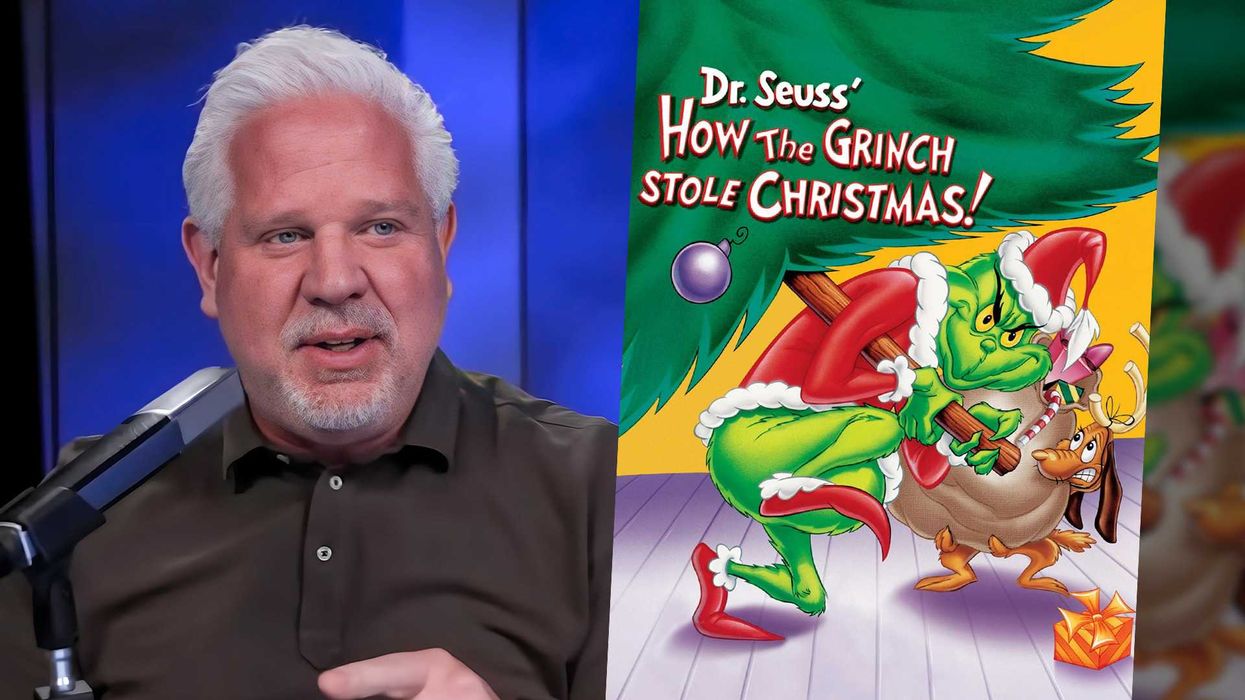
© 2025 Blaze Media LLC. All rights reserved.
This Panic Has Been Horribly Overblown': Scientist Decries Nuke 'Fear Mongering
March 15, 2011
"...people don't understand a nuclear reactor is something very different than an atomic bomb."
Jay Lehr, science director at the Heartland Institute, has some advice for doomsayers wondering if radiation from the crippled Japanese nuke plants could mean massive local deaths and even cross the Pacific and reach America: calm down.
In an interview on Fox News today, Lehr told host Bill Hemmer that not only is the U.S. not at risk of experiencing nuclear fallout, but he also drew stark differences between atomic bombs and nuclear reactors.
"We only have to look at the worst nuclear disaster in history, that was Chernobyl, where there was no containment structure," he said. "10 years later when all the facts were in there were less than 10 fatalities from that explosion -- only people right near the plant were affected by the radiation, 1,000 people got leukemia, 998 were cured ... . It was predicted that tens of thousands of people would get cancer ... [but] this never happened. This is not an atomic bomb and people don't understand a nuclear reactor is something very different than an atomic bomb."
"There are horrible, horrible problems in Japan and the stress that this is creating is unwarranted, unnecessary," he added, even going as far as to call stories about a possible meltdown -- which he says won't produce massive destruction -- "fear mongering":
Lehr's comments come as the AP reports dangerous levels of radiation in Japan. A U.S. nuclear industry official says there is evidence that the primary containment structure at one of the stricken Japanese reactors has been breached, raising the risk of further release of radioactive material.
 Anthony Pietrangelo of the Nuclear Energy Institute said Tuesday that falling pressure inside the suppression pool at the No. 2 reactor at Fukushima Dai-ichi and reports of rising radiation levels there raise the possibility that the reactor's containment has been breached. He said the breach of the primary containment structure could lead to the release of more radioactive materials.
Anthony Pietrangelo of the Nuclear Energy Institute said Tuesday that falling pressure inside the suppression pool at the No. 2 reactor at Fukushima Dai-ichi and reports of rising radiation levels there raise the possibility that the reactor's containment has been breached. He said the breach of the primary containment structure could lead to the release of more radioactive materials.
In a nationally televised statement, Prime Minister Naoto Kan said radiation had spread from the four stricken reactors of the Fukushima Dai-ichi nuclear plant along Japan's northeastern coast. Japanese officials told the International Atomic Energy Agency that the reactor fire was in a fuel storage pond - an area where used nuclear fuel is kept cool - and that "radioactivity is being released directly into the atmosphere." Long after the fire was extinguished, a Japanese official said the pool might still be boiling, though the reported levels of radiation had dropped dramatically by the end of the day.
Late Tuesday, officials at the plant said they were considering asking for help from the U.S. and Japanese militaries to spray water from helicopters into the pool.
If the water boils, it could evaporate, exposing the rods. The fuel rods are encased in safety containers meant to prevent them from resuming nuclear reactions, nuclear officials said. But they acknowledged that there could have been damage to the containers. They also confirmed that the walls of the storage pool building were damaged.
Experts noted that much of the leaking radiation was apparently in steam from boiling water. It had not been emitted directly by fuel rods, which would be far more virulent, they said.
"It's not good, but I don't think it's a disaster," said Steve Crossley, an Australia-based radiation physicist.
The Associated Press contributed to this report.
Want to leave a tip?
We answer to you. Help keep our content free of advertisers and big tech censorship by leaving a tip today.
Want to join the conversation?
Already a subscriber?
Jonathon M. Seidl is a former managing editor of Blaze News and a best-selling author and speaker. His next book, “Confessions of a Christian Alcoholic,” will be released on October 7, 2025.
Jonathon M. Seidl
Jonathon M. Seidl is a former managing editor of Blaze News and a best-selling author and speaker. His next book, “Confessions of a Christian Alcoholic,” will be released on October 7, 2025.
more stories
Sign up for the Blaze newsletter
By signing up, you agree to our Privacy Policy and Terms of Use, and agree to receive content that may sometimes include advertisements. You may opt out at any time.
Related Content
© 2025 Blaze Media LLC. All rights reserved.
Get the stories that matter most delivered directly to your inbox.
By signing up, you agree to our Privacy Policy and Terms of Use, and agree to receive content that may sometimes include advertisements. You may opt out at any time.






